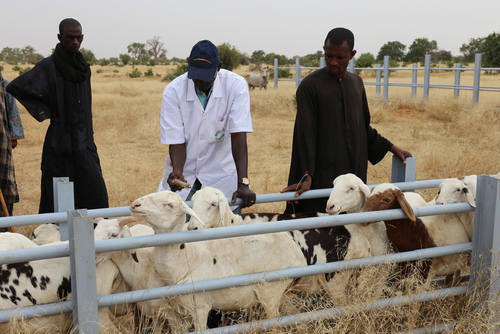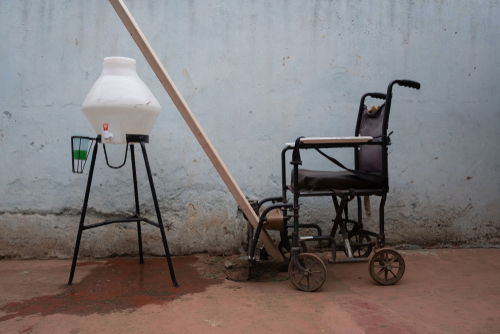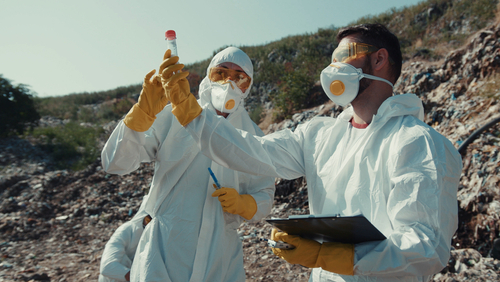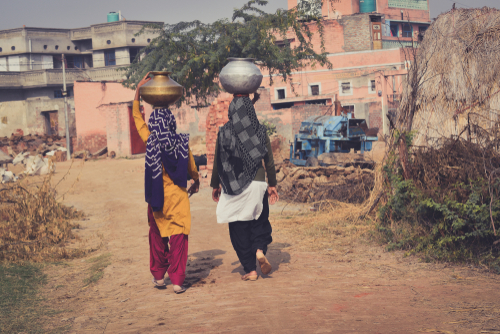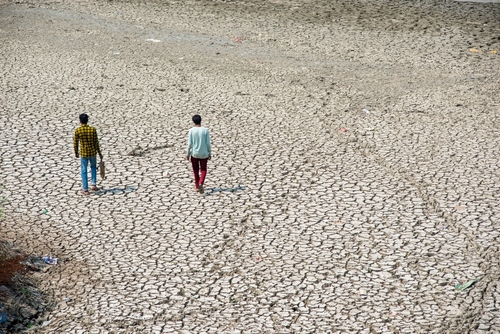May 02, 2023
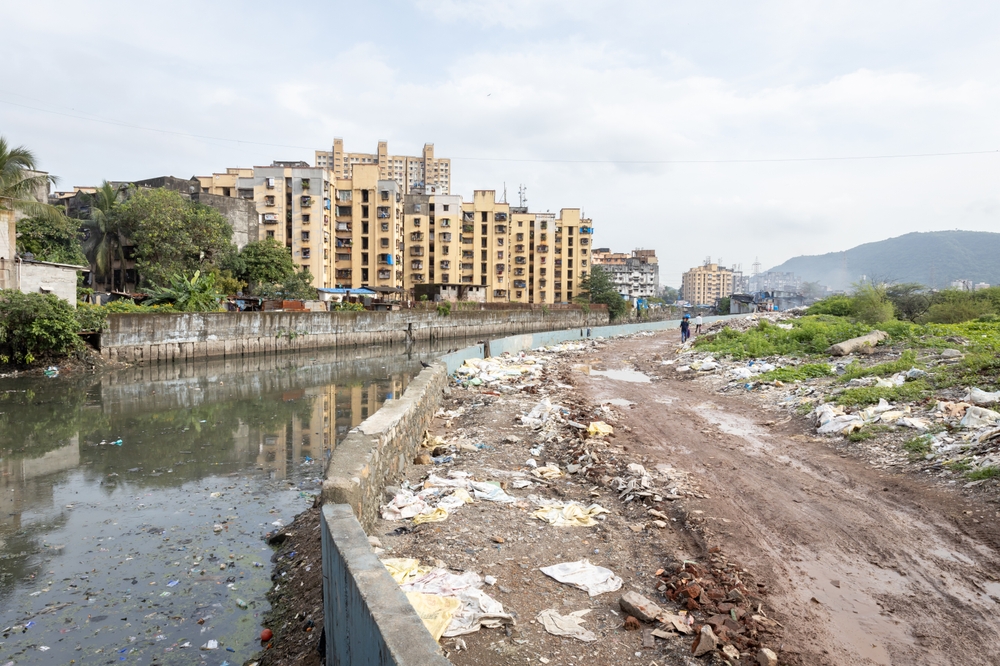
Work must be done to ensure the quality and validity of alternative medicine products
A recent study that found that drinking cow urine is significantly harmful to human health has been widely publicized in India because the substance was previously believed to be beneficial by many who practice ‘Ayurveda,’ a traditional medicine system stemming from Hindu teachings and scriptures with more than 2,000 years of history. OHT’s Ramanan Laxminarayan says that the one study does not negate all Ayurveda practices, and there are medicines rooted in Ayurveda that have been validated. He affirms, “the challenge is subjecting practices and modalities to much more stringent testing and approvals, but many of these protocols remain to be developed…Certainly, there are many hidden gems in Ayurveda, but also many that are poorly validated and not supported by evidence. Separating what is effective and safe from what is not is the task that lies ahead.” [The Telegraph]
More research is needed to show the harmful impact of indoor air pollution on human health
While growing research has led to policy changes aimed at decreasing the effects of outdoor air pollution, indoor air pollution has not received the same attention, despite having contributed to 3.2 million deaths globally in 2020. Pollutants, respiratory pathogens, and carcinogenic particles can accumulate in indoor spaces, but improved air and ventilation standards in private residences and buildings can be challenging to enforce. Scientists and policymakers must better understand the composition and toxicity of indoor emissions, explore variations in pollutants across different cultures and countries, and devise solutions based on empirical data to decrease the harmful impact of indoor air pollution on human health. [Nature]
Over 75 percent of UTIs among women in Ethiopia are drug-resistant
Researchers identified risk factors associated with culture-positive urinary tract infection (UTI) and the antimicrobial susceptibility patterns of UTI bacterial isolates among sexually active women in Arba Minch, Southern Ethiopia. Data analysis and susceptibility studies carried out between February and June 2021 revealed a strong association between UTI and vaginal sex, whereby frequent and recent vaginal sex increased the odds of contracting a UTI by nine- and six-fold, respectively. There was a link between improper toilet hygiene habits, such as wiping from back to front after defecating, and an increased risk of UTI. The pathogens predominantly responsible for UTI among the group studied were E. coli (35.48 percent), K. pneumoniae (20.97 percent), and S. saprophyticus (16.13 percent). Over three-fourths of the identified bacterial isolates displayed resistance to one or more antimicrobial agents. [Infection and Drug Resistance]
Migrant and refugee health must not be neglected in infectious disease mitigation strategies
The current Ebola crisis in Uganda, which began in September 2022, has highlighted the importance of prioritizing the health of vulnerable migrants and refugees. In 2020, there were 1.4 million refugees in Uganda, mostly due to the conflicts in South Sudan and the Democratic Republic of Congo. Inclusive policies in countries receiving refugees and migrants are necessary to protect their health and prevent the spreading of infectious diseases through migration corridors. Public health screening and intervention procedures at migrant entry points can help achieve this goal. [One Health]
Increasing TB screening and access to point-of-care testing
In 2018, the United Nations High-level Meeting declared their goal of treating at least 40 million people with tuberculosis (TB) by 2022. However, in 2021, only 66 percent of this objective had been achieved. The WHO Standard for universal access to rapid TB diagnostics provides guidelines on using WHO-recommended rapid diagnostics (WRDs) so that TB diagnostics, especially in low- and middle-income countries, can be upscaled. Steps in the cascade of TB diagnostic care include increasing screening coverage in high-risk populations, expanding WRD access in primary care facilities, and using positive WRD TB results to inform clinical care. [WHO]
Assessment of captive wildlife facilities in Vietnam
The mapping of captive wildlife facilities CWFs in Vietnam between 2015 and 2021 was conducted to create a CWFs management system. CWFs were identified in every region but in varying concentrations. The Mekong River Delta recorded the greatest number of CWFs (35.3 percent) and the highest number of animals (43.1 percent). The researchers also identified 95 species – belonging to the highest level of protection outlined by the national government – being raised at 1,824 CWFs. While the overall number of CWFs in 50 of Vietnam’s provinces decreased each year of the study period, CWF activities require ongoing monitoring to prevent the spillover of zoonotic diseases originating in wildlife. [One Health]
Communication between providers and parents can help increase HPV vaccination coverage in the US
While the HPV vaccine is approved in the US for children as young as nine years old, less than two-thirds of adolescents aged 13 to 17 years completed the HPV vaccine series in 2021. Gender, poverty, and racial disparities in the incidence of oropharyngeal, cervical, and anal cancers exacerbate this gap in protection against HPV-attributable cancers. Some experts suggest that moving the HPV vaccine routine recommendation to an earlier age (9 years of age instead of 11 or 12) could increase the uptake rate. [Human Vaccines & Immunotherapeutics]
Xenomonitoring can help track markers of antimalarial drug resistance
Xenomonitoring consists of monitoring molecular markers associated with antimalarial drug resistance among humans by analyzing samples derived from blood-fed mosquitoes. Through cross-sectional xenomonitoring studies in southwest Burkina Faso between October 2018 and 2019, researchers identified 551 malarial infections in 1,483 human blood samples and 346 infections in 2,151 mosquito blood meals. Molecular markers conferring reductions in drug susceptibility were observed in similar temporal trends in samples derived from human and mosquito blood meals. However, the lack of statistical significance in the findings requires additional studies to confirm the role of xenomonitoring in detecting drug resistance in areas with limited surveillance. [The Lancet Microbe]
Addressing inequity in WASH research
Researchers from low- and middle-income countries (LMICs) from the water, sanitation, and hygiene (WASH) sector were interviewed to identify inequities in various stages of the research process. Their perspectives revealed power differentials between LMICs and high-income countries (HICs) within WASH research, resulting in inequitable research partnerships and disparities in research funding and support, worsened by the lack of LMIC representation on funding committees. Othering language and discriminatory habits were frequently reported by LMIC researchers, who attested to an overall lack of awareness of the pervasive discrimination in the world of WASH research. [BMJ Global Health]
Cost assessments of malaria vaccine delivery
A prospective study estimated the cost of introducing and delivering the WHO-recommended malaria vaccine, RTS,S/AS01E, in Mali and Burkina Faso. The affordability and feasibility of three seasonal delivery methods were evaluated: 1) mass campaign only, 2) routine Expanded Program on Immunization (EPI), and 3) mixed delivery. Assuming a vaccine price of US$5 per dose, the cost of delivery per dose was found to be more costly for the mass campaign (US$7.73 and $8.86), followed by mixed delivery ($7.26 and $7.93), and routine EPI (US$7.04 and $7.38). [BMJ Global Health]
The typhoid burden in India is high, despite declines in hospital-reported cases
Weekly surveillance for acute febrile illness and recording of typhoid fever incidence among children aged between 6 months and 14 years in India between 2017 and 2020 showed high disease incidence in urban and rural sites. The incidence of culture-confirmed typhoid ranged from 960 per 100,000 child-years in Delhi to 1,955 per 100,000 child-years in Vellore. Furthermore, the estimated incidence of typhoid fever was higher among children in urban areas than in rural areas. Given the significant burden of typhoid in India, recent declines in hospital-reported cases of typhoid are likely due to reduced care-seeking behaviors. [NEJM]
Scientists propose a novel aircraft-based wastewater surveillance network
Aircraft-based wastewater surveillance was evaluated as a method to identify emerging infectious threats and map the global spread of pathogens via international air travel. Using key airport hubs as nodes in the surveillance network, this approach would require frequent testing of aircraft wastewater for microbes. The proposal emphasizes the global nature of this surveillance technique compared to existing surveillance systems which typically operate at local, regional, and national levels. Scientists point to the importance of first building an international alliance composed of air travel officials, public health experts, and biologists to effectively create a global data collection and analysis platform and initiate the development of aircraft-based wastewater surveillance. [The Lancet Global Health]
Image from Shutterstock.

